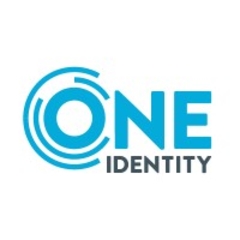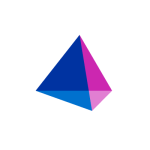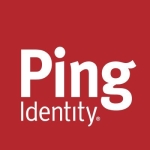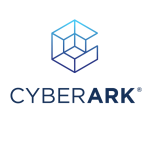The purpose of the solution is to add customers with identity and access management. We build software for them and configure everything, however, we're more on the consulting side.
Automation has really helped to improve things. It provides less manual work for creating accounts and providing permissions. It allows for a faster onboarding process. As soon as a person joins a company, it used to take one or two weeks until someone had permission to access everything that they needed to access for the job. With this product, that can be reduced to half a day.
There's now an automatic generation of accounts. There's no human element anymore. It's directly from HR to the Active Directory. There are fewer errors made or no errors. Overall, there are fewer errors, more automation, and faster processes. If someone leaves the company or needs to be deactivated and everything needs to be removed, nothing is forgotten.
The customization is an excellent aspect of the solution. You can basically change the product to anything that we need to with most of the code available. Most of the user interfaces can be changed just by the request of the user and our customers. That's very good.
Another very good part is the standard connectors, especially SAP. The integration with SAP and One Identity Manager is just very good. It brings a lot of the standards with it already. There's a lot that has already been done and doesn't have to be configured manually. That's back to the customizability. If the SAP connector or any other connector is not enough, things can be reconfigured.
We use it to manage SAP. From an enterprise view standpoint, we have a full list of all SAP users. It connects all SAP users to the specific employees and we get an enterprise view. The solution connects SAP accounts to employee identities under governance. That is very important. It's one of the most important things we can do - to recertify permissions and recertify the users and also find authentic users that are not used anymore. That is why it's a very important part of governance.
The solution provides some default workflows for creating users, updating permissions, et cetera, however, you can customize beyond that. You can basically do whatever you want all in workflow and processes, automatic processes, et cetera.
It provides a single platform for enterprise-level administration and governance of users, data, and privileged accounts. It allows you to see everything. If you have more than one product, you have a very good overview of everything. The identity manager alone can give an overview of privileged accounts that exist. The overview is very good.
The solution's user experience and intuitiveness are great, especially for the users and administrators. The web interface is very good. It's very easy to use. Most customers change the interface colors and icons and stuff like that to match their own company.
It is easy to customize the solution for our particular needs or for our client's particular needs, depending on what has to be customized. For web interface customization, you need to do some programming. You need to be experienced in web interface programming. However, enterprise processes, workflows, approval, recertification, and calculation of permissions and stuff like that is very easy. It's easy to configure that without much knowledge of the system.
We make use of the solutions business roles to map the company structure for dynamic application provisioning. Business growth is one of the first things that we try to conceptualize with our customers. We can map specific permissions to specific roles and also apply those via dynamic roles automatically to people in specific departments.
We do use the solution to extend governance to cloud apps. This extension of governance to the cloud apps is important. You have to extend the governance to every aspect - not only on-premise, but also cloud. You cannot stop with governance. If you only do governance on half your systems, then that doesn't really make sense. Therefore, it's very important that the solution provides it for the cloud as well.
The product helps minimize gaps in governance coverage. The recertification and access management part can help with that.
It can help consolidate procurement and licensing. None of our customers have needed it until now.
The solution helped enable application owners and managers to make application governance decisions without IT. When the recertification or application access is automated and configured correctly, then the manager automatically gets, for example, every six months, a request on the web interface, which is very easy to understand. It basically explains everything. The user just has to click the green arrow or the red cross to say yes or no to certain access or permissions; it's very easy.
The product helped us achieve an identity-centric zero-trust model. It all comes back to the optimization of different accounts since everything is connected. With this product, you get a 360-degree view of all accounts, et cetera.
Items that can be improved in the solution include pricing, integration, support, and analytics.
The update processes for hotfixes need improvement. There are bugs in the system, and even though there are not a lot, there's no information about it until you happen to stumble upon it and then talk to the support, and then the support informs you there has been a hotfix for that for two months. Users need to be informed they exist in advance.
Integrations are basically always able to improve. They can always have more standard connectors, more prepaid workflows, more templates, and stuff like that. That said, with the standard rest API and C-sharp and power share connectors you can basically do everything that you need to do even with stuff that is not supported.
I've been using the solution for three years.
It's very stable. I have never seen it crash or anything like that.
It's very scalable. I've seen the solution operate with millions of users.
I mostly work with premiere support. It offers faster support times. That's important. When we do reach out, it's likely very critical.
I have past experience with Microsoft, Omada, and IBM HCI, among others. While I can't speak to the pricing differences, functionality seems to be better with One Identity. It's more customizable and the user interface is very good.
The deployment varies according to what is included in the deployment itself. To get it up and running, it takes about one year.
We have enterprise clients and it's mostly deployed in a high-availability environment, mostly three databases, a web server, and an application server. It mostly starts small with one server and then grows bigger. The same is true with the application side. All of our customers are using Active Directory, Azure Active Directory, or a combination of both. That's the first integration that we start with. Then, we also have, of course, HR data coming in via .CSV or a REST API or starting connector.
We're also implementing standard workflows, and standard processes, and integrating HR data to exchange for emails or anything like that. As soon as the big applications are done, we provide workshops so that the companies can extend the product by themselves.
The solution requires maintenance. There are regular updates provided. We also check regularly if there are any processes or jobs that aren't working anymore. Other than that, there's maintenance maybe once a year. It's not very often.
I'm not too familiar with the pricing.
We're integrators.
I'd advise others to always do a proof of concept for this or any other product they use. However, I would recommend the product to others.
I'd rate the solution nine out of ten.

















